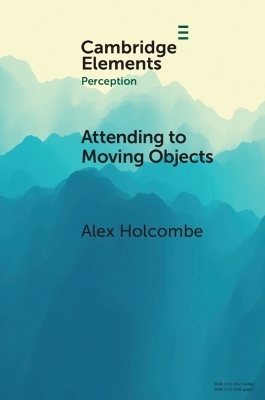
Attending to Moving Objects
Seiten
2023
Cambridge University Press (Verlag)
978-1-009-00997-3 (ISBN)
Cambridge University Press (Verlag)
978-1-009-00997-3 (ISBN)
Spatial selection processes act as a bottleneck that gate subsequent processing. To improve our understanding of this bottleneck, future work should strive to avoid contamination of tracking tasks by high-level cognition.
Our minds are severely limited in how much information they can extensively process, in spite of being massively parallel at the visual end. When people attempt to track moving objects, only a limited number can be tracked, which varies with display parameters. Associated experiments indicate that spatial selection and updating has higher capacity than selection and updating of features such as color and shape, and is mediated by processes specific to each cerebral hemisphere, such that each hemifield has its own spatial tracking limit. These spatial selection processes act as a bottleneck that gate subsequent processing. To improve our understanding of this bottleneck, future work should strive to avoid contamination of tracking tasks by high-level cognition. While we are far from fully understanding how attention keeps up with multiple moving objects, what we already know illuminates the architecture of visual processing and offers promising directions for new discoveries.
Our minds are severely limited in how much information they can extensively process, in spite of being massively parallel at the visual end. When people attempt to track moving objects, only a limited number can be tracked, which varies with display parameters. Associated experiments indicate that spatial selection and updating has higher capacity than selection and updating of features such as color and shape, and is mediated by processes specific to each cerebral hemisphere, such that each hemifield has its own spatial tracking limit. These spatial selection processes act as a bottleneck that gate subsequent processing. To improve our understanding of this bottleneck, future work should strive to avoid contamination of tracking tasks by high-level cognition. While we are far from fully understanding how attention keeps up with multiple moving objects, what we already know illuminates the architecture of visual processing and offers promising directions for new discoveries.
1. Objects that move; 2. Bottlenecks, resources, and capacity; 3. The biggest myth of object tracking; 4. Which aspect(s) of tracking determine performance?; 5. Spatial interference; 6. Unitary cognition (System B); 7. Objects and attentional spread; 8. Grouping; 9. Two brains or one?; 10. Knowing where but not what; 11. Abilities and individual differences; 12. Towards the real world; 13. Progress and recommendations; Bibliography.
| Erscheinungsdatum | 30.01.2023 |
|---|---|
| Reihe/Serie | Elements in Perception |
| Zusatzinfo | Worked examples or Exercises |
| Verlagsort | Cambridge |
| Sprache | englisch |
| Maße | 152 x 229 mm |
| Gewicht | 159 g |
| Themenwelt | Geisteswissenschaften ► Psychologie ► Allgemeine Psychologie |
| Geisteswissenschaften ► Psychologie ► Biopsychologie / Neurowissenschaften | |
| Geisteswissenschaften ► Psychologie ► Verhaltenstherapie | |
| ISBN-10 | 1-009-00997-4 / 1009009974 |
| ISBN-13 | 978-1-009-00997-3 / 9781009009973 |
| Zustand | Neuware |
| Informationen gemäß Produktsicherheitsverordnung (GPSR) | |
| Haben Sie eine Frage zum Produkt? |
Mehr entdecken
aus dem Bereich
aus dem Bereich
Techniken der Verhaltenstherapie
Buch (2024)
Julius Beltz GmbH & Co. KG (Verlag)
CHF 48,95
Buch | Softcover (2024)
Hogrefe Verlag
CHF 46,50


